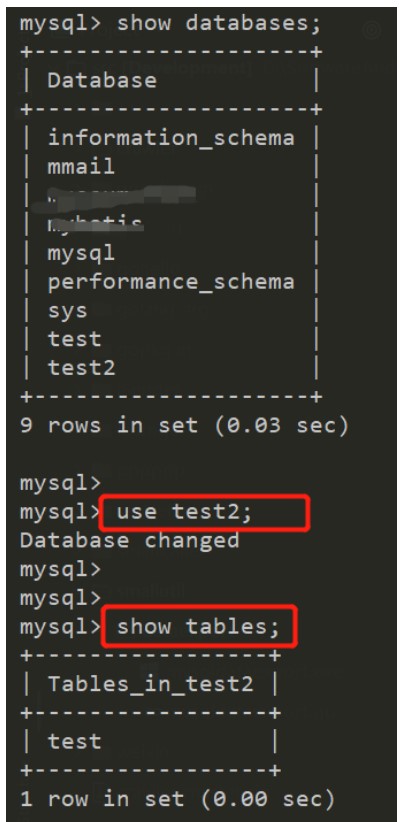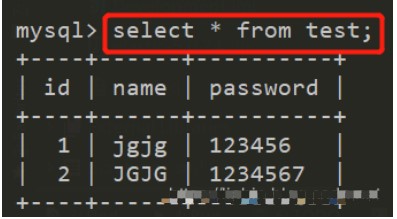mysql数据导出为excel文件,golang实现:
首先下载依赖到的三方库:
Simple install the package to your $GOPATH with the go toolfrom shell:
$ go get -u github.com/go-sql-driver/mysql
代码示例如下,用到了go的flag包的能力,传入命令行参数。具体看helpInfo:
Usage of mysqldataexport:
-port int
the port for mysql,default:32085
-addr string
the address for mysql,default:10.146.145.67
-user string
the username for login mysql,default:dbuser
-pwd string
the password for login mysql by the username,default:Admin@123
-db string
the port for me to listen on,default:auditlogdb
-tables string
the tables will export data, multi tables separator by comma, default:op_log,sc_log,sys_log
代码:
package main
import (
"database/sql"
"encoding/csv"
"fmt"
"os"
_ "github.com/go-sql-driver/mysql"
"flag"
"strings"
)
var (
tables = make([]string, 0)
dataSourceName = ""
)
const (
driverNameMysql = "mysql"
helpInfo = `Usage of mysqldataexport:
-port int
the port for mysql,default:32085
-addr string
the address for mysql,default:10.146.145.67
-user string
the username for login mysql,default:dbuser
-pwd string
the password for login mysql by the username,default:Admin@123
-db string
the port for me to listen on,default:auditlogdb
-tables string
the tables will export data, multi tables separator by comma, default:op_log,sc_log,sys_log
`
)
func init() {
port := flag.Int("port", 32085, "the port for mysql,default:32085")
addr := flag.String("addr", "10.146.145.67", "the address for mysql,default:10.146.145.67")
user := flag.String("user", "dbuser", "the username for login mysql,default:dbuser")
pwd := flag.String("pwd", "Admin@123", "the password for login mysql by the username,default:Admin@123")
db := flag.String("db", "auditlogdb", "the port for me to listen on,default:auditlogdb")
tabs := flag.String("tables", "op_log,sc_log,sys_log", "the tables will export data, multi tables separator by comma, default:op_log,sc_log,sys_log")
flag.Usage = usage
flag.Parse()
tables = append(tables, strings.Split(*tabs, ",")...)
dataSourceName = fmt.Sprintf("%s:%s@tcp(%s:%d)/%s?charset=utf8", *user, *pwd, *addr, *port, *db)
}
func main() {
count := len(tables)
ch := make(chan bool, count)
db, err := sql.Open(driverNameMysql, dataSourceName)
defer db.Close()
if err != nil {
panic(err.Error())
}
err = db.Ping()
if err != nil {
panic(err.Error())
}
for _, table := range tables {
go querySQL(db, table, ch)
}
for i := 0; i < count; i++ {
<-ch
}
fmt.Println("Done!")
}
func querySQL(db *sql.DB, table string, ch chan bool) {
fmt.Println("开始处理:", table)
rows, err := db.Query(fmt.Sprintf("SELECT * from %s", table))
if err != nil {
panic(err)
}
columns, err := rows.Columns()
if err != nil {
panic(err.Error())
}
values := make([]sql.RawBytes, len(columns))
scanArgs := make([]interface{}, len(values))
for i := range values {
scanArgs[i] = &values[i]
}
totalValues := make([][]string, 0)
for rows.Next() {
var s []string
err = rows.Scan(scanArgs...)
if err != nil {
panic(err.Error())
}
for _, v := range values {
s = append(s, string(v))
}
totalValues = append(totalValues, s)
}
if err = rows.Err(); err != nil {
panic(err.Error())
}
writeToCSV(table+".csv", columns, totalValues)
ch <- true
}
func writeToCSV(file string, columns []string, totalValues [][]string) {
f, err := os.Create(file)
defer f.Close()
if err != nil {
panic(err)
}
w := csv.NewWriter(f)
for i, row := range totalValues {
if i == 0 {
w.Write(columns)
w.Write(row)
} else {
w.Write(row)
}
}
w.Flush()
fmt.Println("处理完毕:", file)
}
func usage() {
fmt.Fprint(os.Stderr, helpInfo)
flag.PrintDefaults()
}
操作示例:
编译代码生成可执行文件:
go build mysqldataexport.go

数据库中有test2库下的test表:


导出其中的数据:
.\mysqldataexport.exe -port=3306 -addr="localhost" -user="root" -pwd="mysql" -db="test2" -tables="test"

导出结果如下:

原作者:小碗汤
 /7
/7 